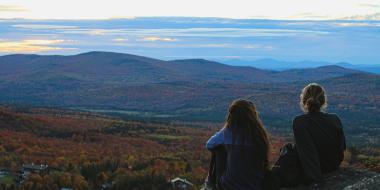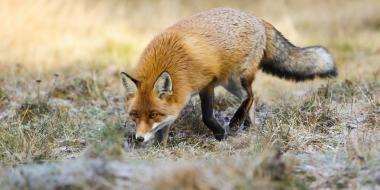Winter and camping — an oxymoron? Or the ultimate outdoor adventure? The experts at Scouts Canada agree that winter camping is a must-have experience!
Picture this: you’ve just set up camp and have a warm fire roaring, when white billows of snow begin to fall around you. There’s nothing more Canadian than winter camping, but of course warmth, comfort, and safety should be top of mind before planning your next (or first) camping venture in cold temperatures.
It’s always recommended that you check the forecast before leaving home and prepare accordingly as winter weather can be unpredictable. In Scouting, youth are taught outdoor skills to make winter camping both safe and fun; and though Scouts are considered Canada’s youngest outdoor experts, winter camping is something that anyone can undertake, especially with these tried-and-tested, Scout-approved hacks.
Scouts Canada's Winter Camping Tips

Prepare your camping area
Pack down a large area of snow before placing your tent or building your winter shelter on top. This will give you a smooth, flat surface while sleeping, and lessen the chance of tearing the floor if you were to step into a hole underneath. Using snowshoes or skis if you have them will make this easier and faster.
Bring a good sleeping pad if you are camping overnight. You lose more heat through conductive heat loss when sleeping, so make sure your pad is thick enough that you can’t feel the cold when lying down. Use a yoga mat or two to help create an extra heat barrier.
Keep camping gear warm
Stuff your clothes for the next day into your sleeping bag. This will help avoid having big pockets of air in your sleeping bag — and retain body heat. Plus, you’ll wake up with warm clothes to put on in the morning.
Place your boots and boot liners (kept inside a waterproof bag) in your sleeping bag as well. If your winter boots became damp during the day, placing them in your sleeping bag will keep them from freezing at night. Then in the morning, they’ll be dry and toasty warm.
Firestarters and batteries
Pack your matches in a waterproof metal container, not plastic, as plastic can break if frozen. And always pack more than you think you’ll need. The last thing you want is lost or damp matches, leaving you without a very important tool for fire making!
Create quick firestarters by pulling items from around your house. Coat cotton balls in cooking oil or beeswax, place onto tinfoil and fold into a secure packet. When it’s time to start your fire, cut the packet, twist out a small amount of cotton into a wick, and strike a match to light it.
Use lithium batteries in all of your winter electronics such as headlamps, flashlights, GPS navigators, or radios used to keep track of the changing weather. Not only does lithium perform consistently in cold temperatures compared to alkaline, but they are lighter and last three times as long.
Keep food and drink from freezing
Store your water bottles and other liquids upside down. Water freezes from the top; so, when you are ready for a drink, the frozen water will be opposite to the spout.
Use wooden utensils instead of metal ones when cooking and eating meals. Winter temperatures can make metal super cold, which in turn will cause the temperature of whatever you’re cooking and eating to drop quickly as well. Plus, frozen metal can stick to damp fingers – ouch!
Winter camping lets you enjoy nature and have great outdoor adventures all year long! Don’t forget to bring some good old fashioned songs and stories to tell while you cozy up to the campfire before climbing into your warm sleeping bag. There’s nothing quite like crisp, fresh air and falling asleep to the sounds of nature in the winter.
Visit the Scouts Canada website to learn more about winter camping and find some fantastic activities to keep you moving!






